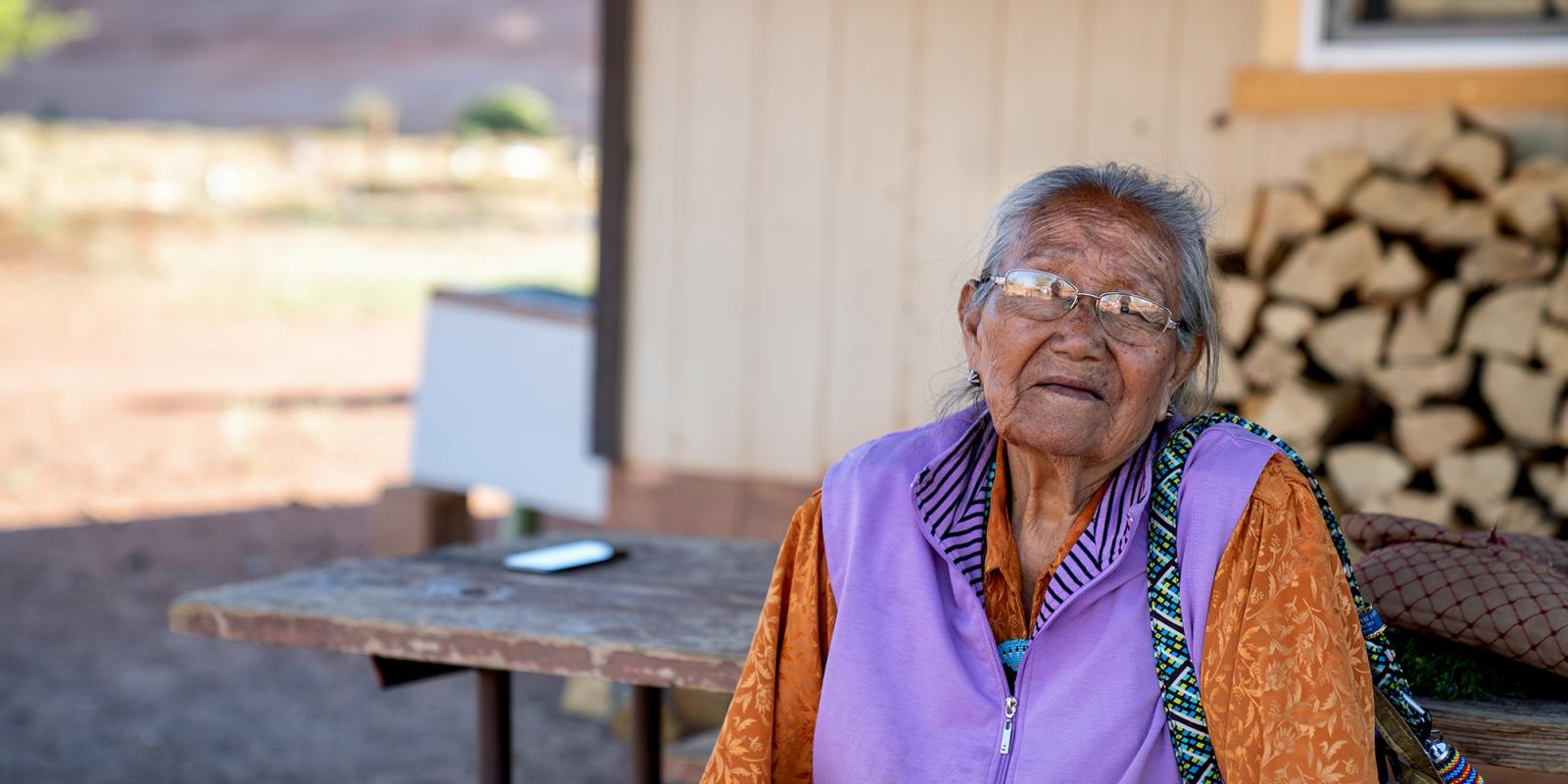It is difficult to provide an overall picture of aging in American Indian and Alaska Native (AI/AN) communities. This difficulty is due to the great diversity across communities with respect to cultural traditions, health, healthcare, social services and family caregiving. Yet one common thread that runs across Indian Country is placing elders in high esteem.
Who Is AI/AN and Where Do They Live?
There also is not one single accepted definition as to who is an AI/AN. To many, AI/ANs are people who are enrolled members of one of the currently 574 federally recognized AI/AN tribes. There are also those who identify as AI/AN who are members of one of the 63 state-recognized tribes. Then, there are people who identify as AI/AN who are not enrolled members of a federally or state-recognized tribe or tribal entity. All tribes or tribal entities determine who is eligible for membership, which is often determined by blood quantum or degree of tribal ancestry.
There are 2,726,278 AI/ANs of any age and 235,124 who are ages 65 years or older. The AI/AN population is younger than the general U.S. population, with a median age of 29, compared to age 37 for the general population. Yet, the number of AI/ANs who are ages 65 or older is projected to increase by 2030 to 657,000 and by 2050 to 996,000. The number of AI/ANs ages 85 or older is also projected to increase from 22,000 in 2012 to 173,00 in 2050.
Compared to their same-age peers of other races and ethnicities, AI/ANs ages 50 or older are less likely to be married, more likely to live alone, more likely to live in a household with at least three generations and more likely to have grandchildren residing in the same household.
A larger percentage of AI/ANs have less education and have an income that is below the poverty level compared to the general U.S. population. Nineteen percent of AI/ANs ages 65 or older live in poverty compared to 9 percent of the same-age general U.S. population.
The number of AI/ANs who are ages 65 or older is projected to increase by 2050 to 996,000.
Although most AI/ANs of any age live in non-rural areas, the proportion of AI/ANs who reside in rural and/or tribal areas increases with age. The number and proportion of AI/ANs of any age who live in urban areas has increased.
The proportion of AI/ANs ages 50 years or older who live on tribal lands is 58 percent and for AI/ANs ages 65 years or older it is 61 percent. States with the highest numbers of AI/ANs ages 65 years or older include Oklahoma (33,285), Arizona (26,256), California (23,894), New Mexico (18,977) and North Carolina (14,995).
How Are AI/ANs Faring, Health-wise?
With respect to health of AI/ANs, life expectancy at birth is 71 years compared to 78 years for the non-Hispanic White population. While life expectancy for AI/ANs is expected to remain relatively low, it has been projected that AI/ANs will experience a large life expectancy increase between now and 2060.
Survey data from 14,632 AI/ANs ages 50 or older who resided on or near tribal lands provides the most current prevalence of health conditions. Study results found that the three most prevalence health conditions were high blood pressure (59 percent), diabetes (54 percent), and arthritis (47 percent). Further, 90 percent of the study participants had been diagnosed with at least one health condition and 70 percent had been diagnosed with at least two conditions.
Older AI/ANs experience a disproportionate amount of physical functioning difficulties, often because of health conditions. Two research studies found that between 52 percent and 75 percent have poor physical functioning.
‘Support for aging AI/ANs, as with other racial and ethnic groups, primarily is provided by the family.’
Less is understood regarding brain health among older AI/ANs, although research interest in this area has recently increased. An examination of 2014 Medicare beneficiaries found that AI/ANs and Whites has similar percentages of all-cause dementia (10.5 percent vs. 11.3 percent, respectively). Other research has suggested that AI/ANs experience brain health disparities, including having the second highest incidence of dementia and the second shortest median survival.
Support for aging AI/ANs, as with other race and ethnic groups, primarily is provided by the family, with 25 percent of AI/AN adults self-identifying as a caregiver. Research with a tribe located in the Southwest found that most caregivers reported that they provided transportation (93 percent), housework (93 percent) and medical related care (72 percent) to the care recipient.
Often caregivers and/or older adults also use formal services in support of independent living for the older adult. Availability to such services varies widely for tribal members residing on or near tribal lands. Such services can be financed with funds from Medicaid, Medicare, Older Americans Act, Department of Justice and tribal revenue. The degree to which specific tribes can finance such programs also varies by community. The most commonly used services by older AI/ANs include congregate meals, home-delivered meals, and senior center programs and the least used services include retirement communities and nursing facilities (pages 35-40).
This article presents an overview of aging in AI/AN communities, but it is critical to appreciate the diversity across and within these communities. Such differences, for example, can been seen in the number of tribal members, cultural practices, language, health, public health priorities and aging-supportive services. Each tribal entity deserves to be understood individually, and those seeking to know aging-related issues in these communities need to appreciate that if you know one tribal community, you only know one tribal community.
R. Turner Goins, PhD, is the Ambassador Jeanette Hyde Distinguished Professor in the College of Health and Human Sciences at Western Carolina University in Cullowhee, N.C.













